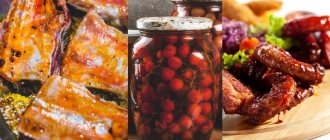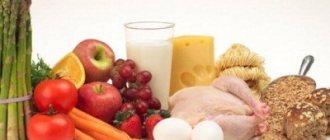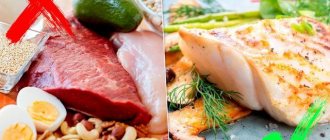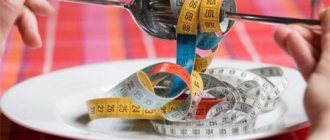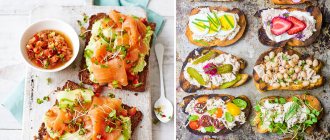General rules
Medical nutrition or “medicinal table” is prescribed for various diseases. Table No. 2 of the Pevzner diet is designed primarily for patients suffering from chronic gastritis with secretory insufficiency and is recommended for mild exacerbations or during the recovery period.
In addition, it is indicated for patients after acute gastritis , colitis and enteritis as a transition to normal nutrition. It can also be followed by patients with chronic colitis in the absence of exacerbation and concomitant gastrointestinal diseases.
It should be noted that the 2nd therapeutic diet is a physiologically complete diet with moderate sparing of the gastrointestinal tract and stimulation of organ secretion. In addition, it normalizes the motor function of the digestive organs. Since the main purpose of its purpose is to stimulate secretion, dishes of varying degrees of grinding and processing are included. These can be boiled and stewed dishes, baked and even fried, but without a rough crust (therefore, breading in flour and breadcrumbs is not allowed).
Dishes are practically not pureed, and only products rich in fiber (coarse vegetables) or connective tissue (stringy meat) can be pureed.
However, foods that are difficult to digest and linger in the stomach for a long time, thereby irritating the mucous membrane, as well as very cold and very hot dishes are excluded. According to its chemical composition, it is distinguished by its completeness: 100 g of proteins, 100 g of fats and up to 420 g of carbohydrates. Daily calorie content: 3000 kcal. Food is taken in equal portions.
We can summarize the main points of the therapeutic diet:
- introduction of secretion agents into the diet (broths);
- pureeing dishes is not necessary - fine chopping of boiled vegetables for second courses and fresh ones for first courses is allowed;
- exclusion of difficult to digest foods;
- food processing capabilities have been expanded (frying is allowed);
- Excessively cold and hot dishes are excluded;
- salt is moderately limited;
- 4-5 meals a day are provided, including drinking kefir before bed;
- daily ration by weight should not exceed 3 kg;
- The norm for liquid is 7 glasses a day, but you can’t drink it with meals.
Authorized Products
Soups are prepared in a weak broth (meat/fish/mushroom) with the addition of finely chopped vegetables, well-cooked cereals, noodles, and you can add meatballs. If tolerated, borscht, cabbage soup and beetroot soup are allowed, but the vegetables need to be chopped very finely. Rassolnik is prepared with vegetables, but without pickles (brine is used instead).
Main courses are prepared from lean meat without tendons. For this they use beef, lamb, pork, chicken and turkey, tongue, and liver. You can use them to make cutlets, dumplings, meatballs, zrazy; all these products can not only be baked, but also fried without breading, simply brushed with egg. Veal, chicken and rabbit can be cooked in pieces.
Pancakes with boiled meat are allowed, but they must be baked. You need to choose low-fat varieties of fish that can be baked, stewed or fried without breading, and make products from fish mass. Soaked herring is allowed; it can be consumed in the form of mincemeat or herring oil.
All cereals are added to garnishes and soups, except coarse ones: pearl barley and millet; vermicelli; noodles. Porridge can be cooked in broth or water and boil well. Souffles, puddings and cutlets are made from cereals (can be fried without a rough crust). Casseroles with vermicelli (noodles) and cottage cheese (meat), and fruit pilaf are allowed. Wheat bread is allowed only stale or dried. You can eat biscuits or biscuits. Twice a week - baked savory pies with apples, jam or cottage cheese.
Dairy products allowed are yogurt, kefir, cottage cheese and sour cream. You can make souffles, lazy dumplings, cheesecakes, and puddings from cottage cheese. Pieces and grated cheese are allowed, 2 eggs twice a week (soft-boiled, omelet with cheese and fried eggs without crust). Milk and cream are added only to dishes.
Among the appetizers on a fresh table, you can allow a salad of boiled vegetables, boiled meat and fish, liver pate, doctor's or milk sausage, jellied fish in a vegetable broth, lean herring, sturgeon caviar and lean ham.
Allowed: potatoes, carrots, zucchini, pumpkin, beets, cauliflower. If tolerated well, green peas and white cabbage are administered. They can be boiled, stewed, baked in pieces, added to casseroles and made into vegetable cutlets, but lightly fried. You can add a little bay leaf, parsley, dill or celery to stewed vegetables. Fresh ripe tomatoes are also allowed. You can make salads from tomatoes with vegetable oil (exclude onions, sweet peppers and cucumbers). Salads of boiled vegetables with meat and eggs (without onions, sauerkraut and pickles).
Ripe fruits and berries, not pureed, are allowed if they are very soft or pureed. If well tolerated - up to 100-200 g of tangerines, oranges, watermelon, grapes without skin. Baked apples. From fruits you can make purees, jelly, jellies, compotes, add oranges and lemons to tea. Meringues, butter caramel, toffee, marmalade, marshmallows, marshmallows, jam, and honey are allowed as desserts. Drinks include fruit juices, tea with lemon, rosehip infusion.
Table of permitted products
| Proteins, g | Fats, g | Carbohydrates, g | Calories, kcal | |
Vegetables and greens | ||||
| zucchini | 0,6 | 0,3 | 4,6 | 24 |
| cauliflower | 2,5 | 0,3 | 5,4 | 30 |
| potato | 2,0 | 0,4 | 18,1 | 80 |
| carrot | 1,3 | 0,1 | 6,9 | 32 |
| beet | 1,5 | 0,1 | 8,8 | 40 |
| tomatoes | 0,6 | 0,2 | 4,2 | 20 |
| pumpkin | 1,3 | 0,3 | 7,7 | 28 |
Fruits | ||||
| apricots | 0,9 | 0,1 | 10,8 | 41 |
| watermelon | 0,6 | 0,1 | 5,8 | 25 |
| bananas | 1,5 | 0,2 | 21,8 | 95 |
| melon | 0,6 | 0,3 | 7,4 | 33 |
| nectarine | 0,9 | 0,2 | 11,8 | 48 |
| peaches | 0,9 | 0,1 | 11,3 | 46 |
| apples | 0,4 | 0,4 | 9,8 | 47 |
Berries | ||||
| strawberry | 0,8 | 0,4 | 7,5 | 41 |
Cereals and porridges | ||||
| buckwheat (kernel) | 12,6 | 3,3 | 62,1 | 313 |
| semolina | 10,3 | 1,0 | 73,3 | 328 |
| cereals | 11,9 | 7,2 | 69,3 | 366 |
| white rice | 6,7 | 0,7 | 78,9 | 344 |
Bakery products | ||||
| white bread crackers | 11,2 | 1,4 | 72,2 | 331 |
Confectionery | ||||
| jam | 0,3 | 0,2 | 63,0 | 263 |
| jelly | 2,7 | 0,0 | 17,9 | 79 |
| marshmallows | 0,8 | 0,0 | 78,5 | 304 |
| milk candies | 2,7 | 4,3 | 82,3 | 364 |
| fondant candies | 2,2 | 4,6 | 83,6 | 369 |
| fruit and berry marmalade | 0,4 | 0,0 | 76,6 | 293 |
| meringues | 2,6 | 20,8 | 60,5 | 440 |
| paste | 0,5 | 0,0 | 80,8 | 310 |
| Maria cookies | 8,7 | 8,8 | 70,9 | 400 |
Raw materials and seasonings | ||||
| honey | 0,8 | 0,0 | 81,5 | 329 |
| sugar | 0,0 | 0,0 | 99,7 | 398 |
| milk sauce | 2,0 | 7,1 | 5,2 | 84 |
Dairy | ||||
| milk | 3,2 | 3,6 | 4,8 | 64 |
| kefir | 3,4 | 2,0 | 4,7 | 51 |
| cream | 2,8 | 20,0 | 3,7 | 205 |
| sour cream | 2,8 | 20,0 | 3,2 | 206 |
| curdled milk | 2,9 | 2,5 | 4,1 | 53 |
| acidophilus | 2,8 | 3,2 | 3,8 | 57 |
| yogurt | 4,3 | 2,0 | 6,2 | 60 |
Cheeses and cottage cheese | ||||
| cottage cheese | 17,2 | 5,0 | 1,8 | 121 |
Meat products | ||||
| boiled beef | 25,8 | 16,8 | 0,0 | 254 |
| beef liver | 17,4 | 3,1 | 0,0 | 98 |
| boiled beef tongue | 23,9 | 15,0 | 0,0 | 231 |
| boiled veal | 30,7 | 0,9 | 0,0 | 131 |
| rabbit | 21,0 | 8,0 | 0,0 | 156 |
Bird | ||||
| boiled chicken | 25,2 | 7,4 | 0,0 | 170 |
| turkey | 19,2 | 0,7 | 0,0 | 84 |
Eggs | ||||
| chicken eggs | 12,7 | 10,9 | 0,7 | 157 |
Fish and seafood | ||||
| black caviar | 28,0 | 9,7 | 0,0 | 203 |
| salmon caviar granular | 32,0 | 15,0 | 0,0 | 263 |
| herring | 16,3 | 10,7 | — | 161 |
Oils and fats | ||||
| butter | 0,5 | 82,5 | 0,8 | 748 |
| corn oil | 0,0 | 99,9 | 0,0 | 899 |
| olive oil | 0,0 | 99,8 | 0,0 | 898 |
| sunflower oil | 0,0 | 99,9 | 0,0 | 899 |
| ghee | 0,2 | 99,0 | 0,0 | 892 |
Non-alcoholic drinks | ||||
| mineral water | 0,0 | 0,0 | 0,0 | — |
| coffee with milk and sugar | 0,7 | 1,0 | 11,2 | 58 |
| black tea with milk and sugar | 0,7 | 0,8 | 8,2 | 43 |
Juices and compotes | ||||
| apricot juice | 0,9 | 0,1 | 9,0 | 38 |
| carrot juice | 1,1 | 0,1 | 6,4 | 28 |
| pumpkin juice | 0,0 | 0,0 | 9,0 | 38 |
| * data is per 100 g of product | ||||
Do's and don'ts
Recommended and excluded foods and dishes of the “2 table” diet:
Table “What is possible and what is not”
| Products and dishes | What is possible | What not to do |
| Bread and flour products | Wheat bread made from premium, 1st and 2nd grade flour, yesterday's baking or dried. Savory bakery products and cookies, savory cheesecakes with cottage cheese, pies with boiled meat or fish, eggs, rice, apples, jam. | Fresh bread and flour products, from butter and puff pastry. |
| Soups | On weak, low-fat meat and fish broth, on decoctions of vegetables and mushrooms with finely chopped or pureed vegetables, potatoes, boiled or pureed cereals, vermicelli, noodles, meatballs. If tolerated - borscht, cabbage soup, fresh cabbage, beetroot soup with finely chopped vegetables. Rassolnik with pureed vegetables and replacing pickles with brine. | Dairy, pea, bean soup, millet soup, okroshka. |
| Meat and poultry | Low-fat varieties without fascia, tendons, skin; boiled, baked, fried (can be brushed with egg, but not breaded). Products made from cutlet mass from beef, veal, rabbits, chickens, turkeys, as well as young lean lamb and pork. Veal, rabbit, chickens, and turkeys can be cooked in pieces (less often, beef). Boiled tongue. Milk sausages. Baked pancakes with boiled meat. | Fatty and connective tissue-rich meat and poultry, duck, goose, smoked meats, canned food (except dietary); limit pork and lamb. |
| Fish | Low-fat types and varieties of fish. Piece or chopped boiled, baked, stewed, fried without breading. | Fatty types, salted, smoked fish, canned fish snacks. |
| Dairy | Kefir, yogurt and other fermented milk drinks; fresh cottage cheese in its natural form and in dishes (soufflé, pudding, cheesecakes, lazy dumplings), grated or sliced cheese, sour cream - up to 15 g per dish; milk and cream are added to dishes and drinks. | — |
| Eggs | Soft-boiled, steamed, baked and fried (without rough crust) omelettes; White omelette with cheese. | Hard boiled eggs. |
| Cereals | Various porridges with water or with the addition of milk, in meat broth, including well-cooked crumbly porridges, except millet and pearl barley. Steamed and baked puddings, steamed or fried cutlets without a rough crust, vermicelli, noodle soup with cottage cheese or boiled meat, pilaf with fruit. | Legumes, limit millet, pearl barley, barley, corn grits. |
| Vegetables | Potatoes, zucchini, pumpkin, carrots, beets, cauliflower; if tolerated - white cabbage and green peas. Boiled, stewed and baked in pieces, in the form of purees, casseroles, puddings. Cutlets baked and fried without crust. Ripe tomatoes. Finely chopped greens are added to dishes. | Raw, ungrated vegetables, pickled and salted, onions, radishes, radishes, bell peppers, cucumbers, rutabaga, garlic, mushrooms. |
| Snacks | Salads from fresh tomatoes, boiled vegetables with meat, fish, eggs (without onions, pickles, sauerkraut), vegetable caviar. The cheese is not spicy. Soaked herring and mincemeat made from it. Fish, meat and tongue aspic, low-fat beef jelly, liver pate, fat-free ham, sturgeon caviar, diet, doctor's and milk sausage. | Very spicy and fatty snacks, smoked meats, canned food. |
| Fruits, sweet dishes and sweets | Ripe fruits and berries are pureed (puree), very soft - not pureed. Compotes, jelly, jellies, mousses. Compote of pureed dried fruits. Baked apples. Oranges, lemons (in tea, jelly). If tolerated, tangerines, oranges, watermelon, peeled grapes 100-200 g per day. Meringues, snowballs, creamy caramel, toffee, marmalade, pastille, marshmallows, sugar, honey, jams, preserves. | Rough varieties of fruits and berries in raw form, berries with coarse grains (raspberries, red currants) or rough skins (gooseberries), dates, figs, chocolate and cream products, ice cream. |
| Sauces and spices | For meat, fish, mushroom and vegetable broths, sour cream sauce, white sauce with lemon, etc. Vanillin, cinnamon; a little bay leaf; dill, parsley, celery. | Fatty and hot sauces, mustard, pepper, horseradish. |
| Beverages | Tea with lemon, coffee and cocoa with water and milk. Vegetable, fruit, berry juices, diluted with water, rosehip and bran decoctions. | Grape juice, kvass. |
| Fats | Butter, ghee, refined vegetable oils. | Pork, beef, lamb and cooking fats. |
Fully or partially limited products
It is expected to exclude vegetables rich in fiber (radish, turnip, beans, peas, white cabbage, rutabaga) and foods with connective tissue (cartilage, veins, skin). You should not eat milk soups, pea soups, those with added millet, bean soups, or okroshka. Duck and goose meat and lamb should be excluded from meat products. Sorrel, spinach, onions, cucumbers, and sweet peppers are also excluded from vegetables and herbs. Allowed vegetables (tomato coma) should not be consumed raw. Pickled and pickled vegetables are not allowed.
You should not eat fatty fish or canned fish. It should be taken into account that hard-boiled eggs are poorly digestible, so they are excluded in this form. Pork lard, cooking and animal fats, as well as hot seasonings for dishes (hot sauces, horseradish, mustard, garlic, pepper) are prohibited. Any fresh bread, butter or puff pastry is prohibited. As for desserts, it is not allowed to consume dried fruits, berries with grains (raspberries, currants), rough skins (gooseberries, grapes), grape juice, chocolate and ice cream, dates, figs, kvass.
Millet, pearl barley, barley and corn cereals are limited because they are difficult to digest, as well as fatty pork. Milk and cream are consumed with restrictions, adding only to dishes, water porridges, tea and coffee.
Table of prohibited products
| Proteins, g | Fats, g | Carbohydrates, g | Calories, kcal | |
Vegetables and greens | ||||
| vegetables legumes | 9,1 | 1,6 | 27,0 | 168 |
| swede | 1,2 | 0,1 | 7,7 | 37 |
| cabbage | 1,8 | 0,1 | 4,7 | 27 |
| sauerkraut | 1,8 | 0,1 | 4,4 | 19 |
| green onion | 1,3 | 0,0 | 4,6 | 19 |
| bulb onions | 1,4 | 0,0 | 10,4 | 41 |
| cucumbers | 0,8 | 0,1 | 2,8 | 15 |
| canned cucumbers | 2,8 | 0,0 | 1,3 | 16 |
| salad pepper | 1,3 | 0,0 | 5,3 | 27 |
| white radish | 1,4 | 0,0 | 4,1 | 21 |
| turnip | 1,5 | 0,1 | 6,2 | 30 |
| canned tomatoes | 1,1 | 0,1 | 3,5 | 20 |
| horseradish | 3,2 | 0,4 | 10,5 | 56 |
| spinach | 2,9 | 0,3 | 2,0 | 22 |
| sorrel | 1,5 | 0,3 | 2,9 | 19 |
Fruits | ||||
| figs | 0,7 | 0,2 | 13,7 | 49 |
Berries | ||||
| grape | 0,6 | 0,2 | 16,8 | 65 |
| gooseberry | 0,7 | 0,2 | 12,0 | 43 |
| raspberries | 0,8 | 0,5 | 8,3 | 46 |
| Red currants | 0,6 | 0,2 | 7,7 | 43 |
Mushrooms | ||||
| mushrooms | 3,5 | 2,0 | 2,5 | 30 |
Nuts and dried fruits | ||||
| dates | 2,5 | 0,5 | 69,2 | 274 |
Cereals and porridges | ||||
| corn grits | 8,3 | 1,2 | 75,0 | 337 |
| pearl barley | 9,3 | 1,1 | 73,7 | 320 |
| millet cereal | 11,5 | 3,3 | 69,3 | 348 |
| barley grits | 10,4 | 1,3 | 66,3 | 324 |
Ice cream | ||||
| ice cream | 3,7 | 6,9 | 22,1 | 189 |
Chocolate | ||||
| chocolate | 5,4 | 35,3 | 56,5 | 544 |
Raw materials and seasonings | ||||
| mustard | 5,7 | 6,4 | 22,0 | 162 |
| ginger | 1,8 | 0,8 | 15,8 | 80 |
| ketchup | 1,8 | 1,0 | 22,2 | 93 |
| mayonnaise | 2,4 | 67,0 | 3,9 | 627 |
| ground black pepper | 10,4 | 3,3 | 38,7 | 251 |
Meat products | ||||
| pork | 16,0 | 21,6 | 0,0 | 259 |
| salo | 2,4 | 89,0 | 0,0 | 797 |
Bird | ||||
| smoked chicken | 27,5 | 8,2 | 0,0 | 184 |
| duck | 16,5 | 61,2 | 0,0 | 346 |
| smoked duck | 19,0 | 28,4 | 0,0 | 337 |
| goose | 16,1 | 33,3 | 0,0 | 364 |
Fish and seafood | ||||
| dried fish | 17,5 | 4,6 | 0,0 | 139 |
| smoked fish | 26,8 | 9,9 | 0,0 | 196 |
| canned fish | 17,5 | 2,0 | 0,0 | 88 |
Oils and fats | ||||
| animal fat | 0,0 | 99,7 | 0,0 | 897 |
| cooking fat | 0,0 | 99,7 | 0,0 | 897 |
Non-alcoholic drinks | ||||
| bread kvass | 0,2 | 0,0 | 5,2 | 27 |
| * data is per 100 g of product | ||||
Treatment of gastritis with diet Table 2
An innovative drug for losing weight by 30-40 kg! Removes even age-related fat without chemicals, liposuction, diets or exercise. Exercises
At any stage of gastritis, a fasting diet is extremely necessary. It is important not so much to lose weight as to “rid” the body of toxins and waste that clog the digestive system.
We present to you a list of recommended products for the upcoming period of time dedicated to diet Table number 2:
- milk porridge;
- vegetable soups;
- vegetable and fruit purees;
- skim cheese;
- weak tea with milk.
And here is the list of forbidden “delicacies” that you so dearly love :
- fried and smoked meat;
- baking;
- seasonings;
- chocolate, halva, ice cream;
- carbonated drinks;
- strong tea and coffee;
- alcohol.
Nutrition for gastritis with high acidity:
If your body has increased acidity , the logical and wise thing to do is to exclude acidic foods from the menu. Salty food is also a strict taboo. The above should be replaced with vegetable soups and purees. Contrary to all stereotypes and prohibitions, it is recommended to eat soups with white soft bread.
How to avoid obesity and regain an erection at any age?
Also, for gastritis with high acidity, allowed in the menu of the therapeutic diet Table number 2 . But not very fatty, since every percentage of fat content can contribute to the development of the disease.
For gastritis with low acidity:
For gastritis with low acidity, diet number 2 recommends adding several acidic foods to your menu. You should also add sweet fruits and berries, dairy products and lean meat to your diet. In this case, it is strictly contraindicated
With atrophic gastritis
A disease of the gastric mucosa, that is, atrophic gastritis, implies a ban on baked goods, fatty broths, eggs, meat, sauces, chocolate and carbonated drinks, as these products contribute to its development.
With regards to healthy food for the treatment of atrophic gastritis, diet Table number 2 “allows” the consumption of the following foods : soups, flour products, cereals, dairy products, vegetables and fruits.
For stomach ulcers and pancreatitis
If you have a stomach ulcer, it is strictly forbidden to consume foods in your menu that contribute to “irritation” of its walls.
These are:
“Space diet” by Sergei Sivokho: without denying himself anything, the comedian lost 42 kg in 3 months
- broths;
- mushrooms;
- canned and smoked products;
- dairy products;
- nuts and dried fruits;
- ice cream and chocolate;
- strong hot drinks;
- carbonated drinks;
- alcohol.
The list of diet benefits in this case, Table number 2, includes:
- meat, dairy and cereal soups;
- honey, marshmallows, jam;
- freshly squeezed juices, unsweetened tea and compote.
For pancreatitis, diet Table number 2 recommends eating steamed vegetables, milk porridge, jam, compote, jelly and weak tea.
Prohibited are semi-finished products, fried and smoked foods, coffee, sour fruits and carbonated drinks.
Diet menu No. 2
Now that we have found out the foods allowed in this therapeutic diet and the main methods of preparing them, we can create a one-day diet menu for the 2nd table, and using it as a basis, develop nutrition for the whole week. Since the list of products is quite wide and the possibilities for their processing have been expanded, nutrition should be complete and varied. It is allowed to add bay leaves and herbs to dishes.
| Breakfast |
|
| Dinner |
|
| Afternoon snack |
|
| Dinner |
|
| For the night |
|
Pevzner diet No. 2
If the Pevzner diet No. 1 is known to many, then only medical specialists usually know about diet No. 2. And it is prescribed for problems with the digestive tract (peristalsis disorders). Table No. 2 is a balanced diet developed by Pevzner in the early 30s and since then used without changes in specialized departments of hospitals in our country.
The essence of diet No. 2
Using gentle nutrition. All rough food is ground, boiled, and stewed. Avoid foods that are difficult for the stomach to digest and those that irritate its mucous membrane. The finished dish should have a temperature of 15 to 60 degrees Celsius. Diet: fractional: 4-6 times a day. The duration of diet No. 2 can be from 1-2 weeks to several years.
Allowed and prohibited foods in diet No. 2
| product group | allowed | prohibited |
| bread | wheat of 1st, 2nd and highest grades yesterday and dried, unsweetened cookies and pastries, occasionally cold pies and unsweetened curd cheesecakes | fresh bread, baked goods |
| soups | in vegetable or mushroom broth, second broth, pureed, with cereals, pasta, meatballs, cabbage soup, borscht, beetroot soup | dairy, beans, peas, millet, okroshka |
| meat, poultry and fish | milk sausages, boiled tongue, rabbit, beef, veal, chicken, turkey, lean pork and lamb, lean fish | goose, duck, fatty meat, fatty fish, canned food, smoked meats and pickles |
| milk and dairy products | Fermented milk products, cheese, cottage cheese | cream, natural milk |
| eggs | soft-boiled and in the form of omelettes | hard-boiled |
| cereals and legumes | porridge in water, whitened with milk, in meat broth, well boiled, puddings, pilaf with fruit | legumes, with poor tolerance: pearl barley, barley, wheat |
| vegetables | Unlimited pumpkin, zucchini, cauliflower, potatoes, beets, carrots, tomatoes, baked, stewed and boiled vegetables, in the form of vegetable cutlets, greens for decoration | You can’t have radishes, radishes, cucumbers, onions, garlic, bell peppers, mushrooms, rutabaga, spinach, anything salted, pickled, pickled or raw. |
| fruits and berries | only ripe sweet berries and fruits in cooked form, lemon in tea, grapes without skin, watermelons, tangerines | all hard, unripe fruits and those that have a rough skin and many hard (even small) seeds |
| sweets | honey, jam, sugar, marshmallows, marmalade, marshmallow, toffee | chocolate, whipped cream |
| fats and oils | vegetable, baked, creamy | culinary and all animal fats |
| beverages | coffee, cocoa, juices diluted with water, tea with lemon, rosehip decoction, compotes, jelly, fruit drinks | Alcoholic drinks, grape juice, kvass |
Recommended menu for the week: diet No. 2
| day of the week | breakfast | 2nd breakfast | dinner | afternoon tea | dinner |
| Monday | semolina pudding, soft-boiled egg, coffee with added milk | berry jelly | beef broth soup with noodles, boiled meat with mashed potatoes, berry compote | rosehip berry decoction | cottage cheese seasoned with low-fat sour cream, jelly |
| Tuesday | boiled mashed potatoes flavored with butter, herring, tea | rosehip berry decoction | vegetable soup with small meatballs, potato-meat casserole, vegetable juice | apple baked with sugar | lazy dumplings with grated cottage cheese, seasoned with sour cream, tea with honey |
| Wednesday | rice pudding with sour cream, cocoa | fruit and berry jelly | potato soup with second chicken broth, pureed meatballs baked in sour cream, with noodles, compote | apple baked with honey | boiled potatoes with boiled fish, tea with berries |
| Thursday | steam omelette, pasta sprinkled with cheese with low-fat ham, milk coffee | apple baked with sugar | rice and carrot soup, pureed and seasoned with croutons, buckwheat porridge with steamed meat cutlets, sweet berry jelly | rosehip berry decoction | boiled fish, potato casserole flavored with sour cream, apple compote |
| Friday | rice porridge with butter, fish stewed in sour cream, milk coffee | baked apple with honey | pickle prepared with a second meat broth, chicken cutlets, vermicelli, berry tea | orange drink | buckwheat with grated cottage cheese and sour cream, berry jelly |
| Saturday | rice pudding with butter and milk, boiled sausages, tea with orange | apple drink | puree soup from frozen cauliflower and carrots, potato and meat casserole, compote | flower tea with marshmallows | boiled tongue, pasta, berry jelly |
| Sunday | oatmeal with diluted milk, soft-boiled egg, small piece of cheese, cocoa | fruit mousse with marshmallows | meatball soup with potatoes and vermicelli, baked chicken with cauliflower, jelly | marmalade and lemon tea | boiled meat, buckwheat, butter, berry compote |
| daily | at night - 200 grams of fermented milk drink | ||||
Recommendations for following the Pevzner diet No. 2
1. Stick to the diet for as long as you need, and then for another six months. 2. Eat often, but in small portions. 3. Avoid overly hot and cold foods.
Expected results of the second diet
1. Normalization of the digestive tract. 2. Disappearance of pain in the stomach area. 3. Normalization of weight (more often - gaining to the age norm).
Pros of diet two
— Used for several decades in hospitals across the country — tested on thousands of patients. - It really helps to cope with the problem.
Disadvantages of diet No. 2
— It was developed too long ago and has not been revised, therefore it does not take into account modern discoveries in nutrition, recommending butter and dairy products for daily consumption.
Who is the second diet indicated for?
The Pevzner diet No. 2 is designed specifically for patients with impaired motor function of the digestive tract, that is: - chronic gastritis; - acute enteritis; - colitis.
Who is contraindicated for diet No. 2?
Table No. 2 according to Pevzner is therapeutic, and therefore only a doctor can prescribe it for appropriate indications. Diet No. 2 is not suitable for everyone else. You shouldn’t assign it to yourself “just like that.”
Diet No. 2: reviews of modern nutritionists
The Pevzner diet No. 2 is therapeutic and is used under the supervision of a doctor in a hospital. Now the principles of nutrition are being revised towards reducing animal products, including milk, butter and other fats, and meat. Progressive hospitals use modern recommendations of the Russian Ministry of Health.
Advantages and disadvantages
| pros | Minuses |
|
|
Reviews and results
Medical nutrition does not mean monotony and tastelessness of dishes. You can diversify it with new dishes - just don’t be lazy and do everything to restore your health. Reviews from patients indicate that this diet has a beneficial effect on the gastrointestinal tract. Already in the first week, pain and discomfort in the stomach decrease, belching and heartburn disappear.
- “... For gastritis, table number 2 is prescribed, the diet completely suits me! There is a point in therapeutic nutrition, and I tested this on myself, since if it is violated, discomfort in the stomach, belching and even diarrhea immediately appear. It’s especially hard after holidays and heavy food”;
- “... I like it, I eat this way almost all the time, at least I try. I got rid of the unpleasant heaviness in the stomach, the bloating disappeared. I started cooking for myself separately, and then the whole family joined. The son said that now he has no stomach discomfort or belching”;
- “... In the spring, when gastritis worsens, you have to seriously take care of your diet. I love spicy foods, so it’s hard for me to tolerate food restrictions, but I have to. I can withstand a maximum of 3 weeks, but even during this time I feel a significant improvement. If it weren’t for my passion for spicy and smoked foods, I think I wouldn’t have suffered from gastritis”;
- “... It’s hard for me to bear it, and it’s even harder to cook for myself separately - I don’t have time. I think it is suitable for retirees or housewives - they have time to cook. Therefore, I can withstand it for 2 weeks, and then retreats begin and the transition to a common table begins. In winter, when there are few berries and fruits, it is especially difficult to organize snacks for yourself - you can only bake apples and carry jars with you to work. Inconvenient."
Menu for the week
The weekly diet menu Table number 2, which includes a list of acceptable foods, is as follows:
Monday
- Breakfast: cook semolina porridge and drink a cup of coffee with cream;
- Lunch: prepare mashed potatoes combined with lean meat cutlets;
- Dinner: a small portion of cottage cheese with sour cream, washed down with apple compote.
Tuesday
- make a fruit salad and wash it down with weak tea without sugar;
- prepare soup with low-fat meatballs, then drink a glass of tomato juice;
- pies or dumplings with cottage cheese and sour cream, washed down with tea and honey.
Wednesday
- eat some cottage cheese and drink weak tea with lemon;
- meat balls and berry compote;
- wash down low-fat fish cutlets with a glass of apple compote.
Thursday
- macaroni and cheese and a cup of weak coffee.
- soup with croutons and jelly.
- fried fish and a glass of fruit juice.
Friday
- vegetable salad and unsweetened tea;
- fried lean meat cutlets and green tea;
- cook buckwheat porridge and fry fish cutlets with it.
Saturday
- prepare semolina porridge without sugar, wash it down with tea and lemon.
- mashed potatoes and apple compote;
- a glass of low-fat kefir.
Sunday
- cook oatmeal, then eat processed cheese and drink hot cocoa;
- cook soup with meatballs from lean meat, drink a glass of orange juice some time later;
- pilaf and a glass of fruit compote.
